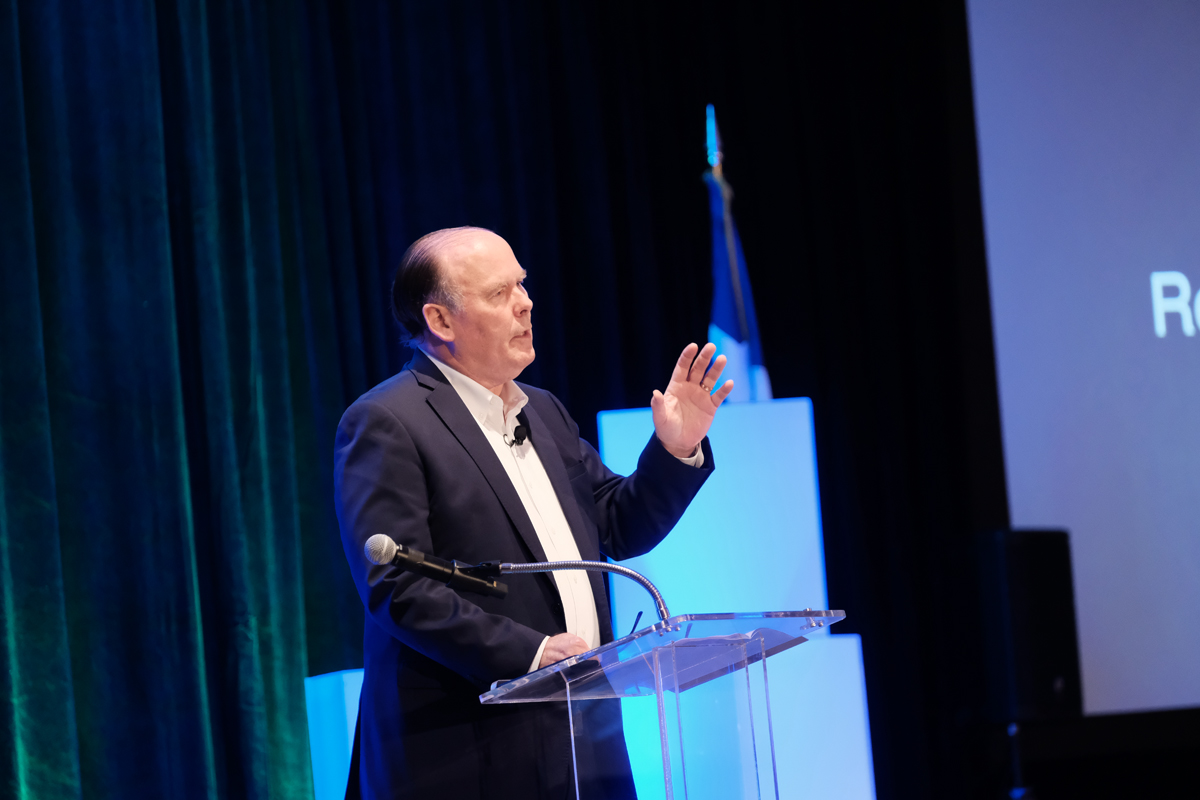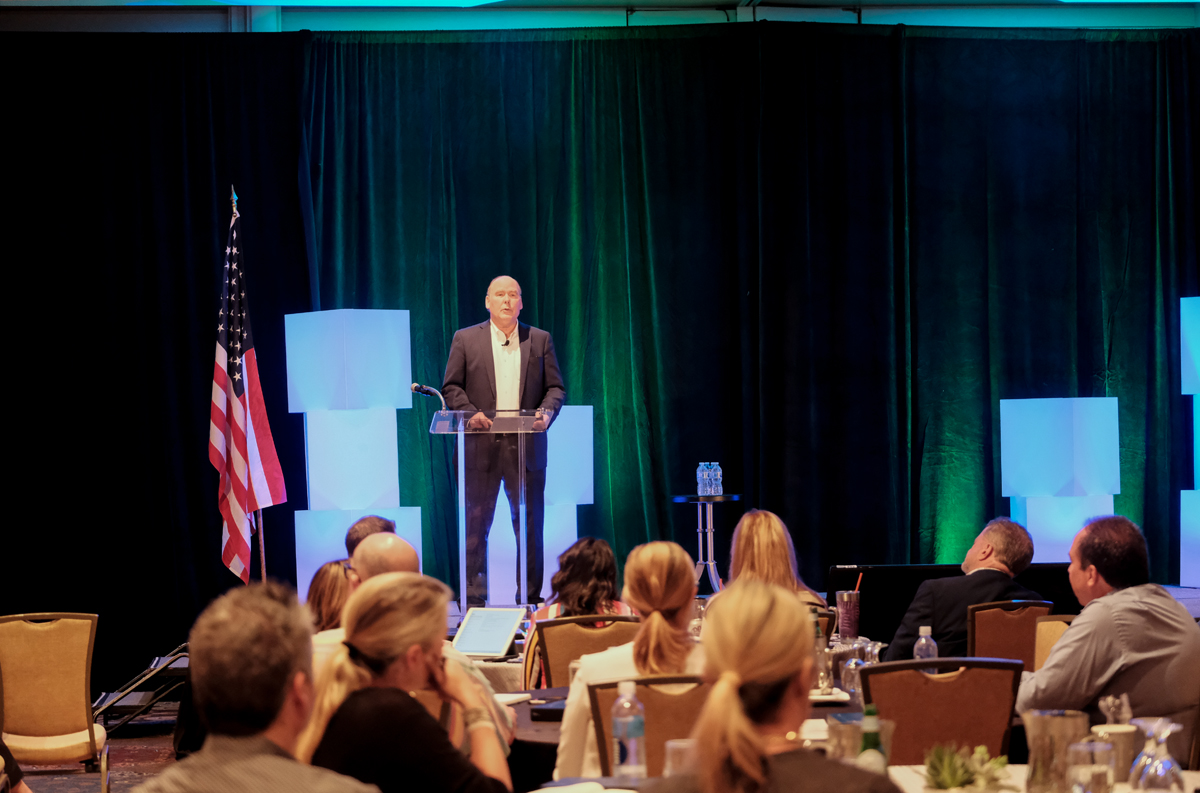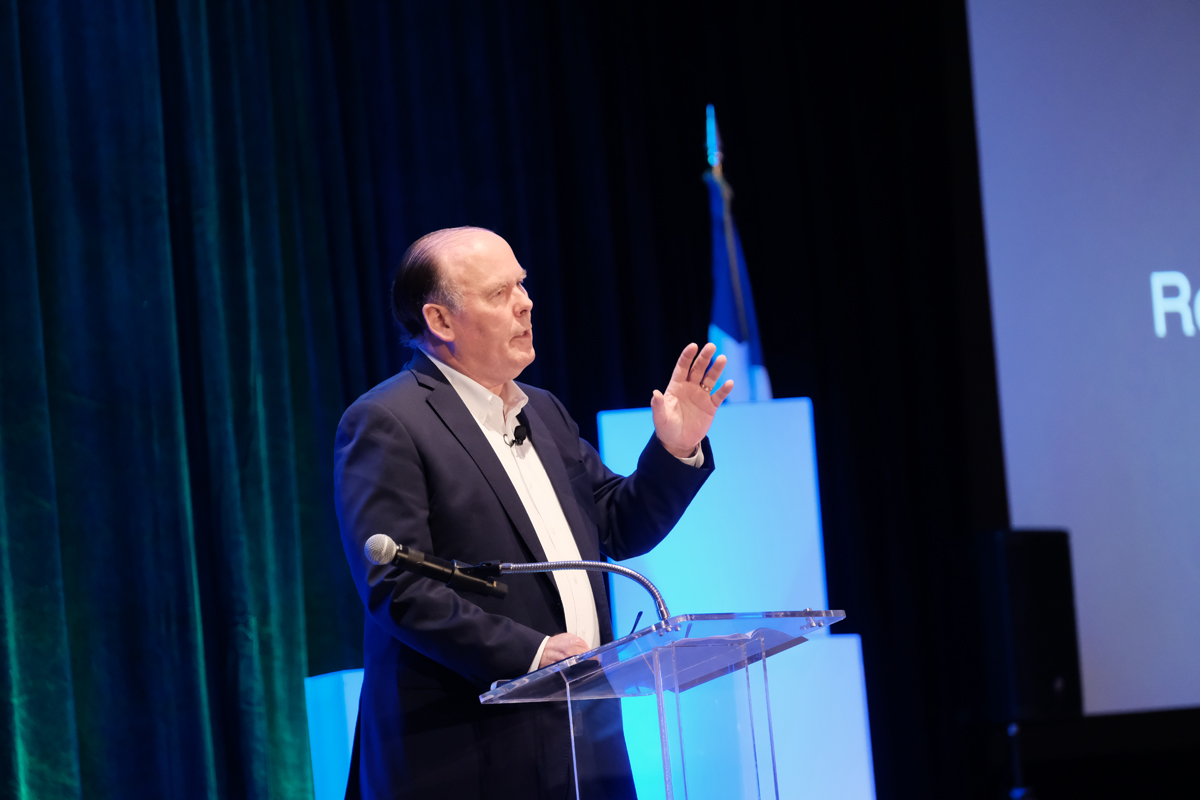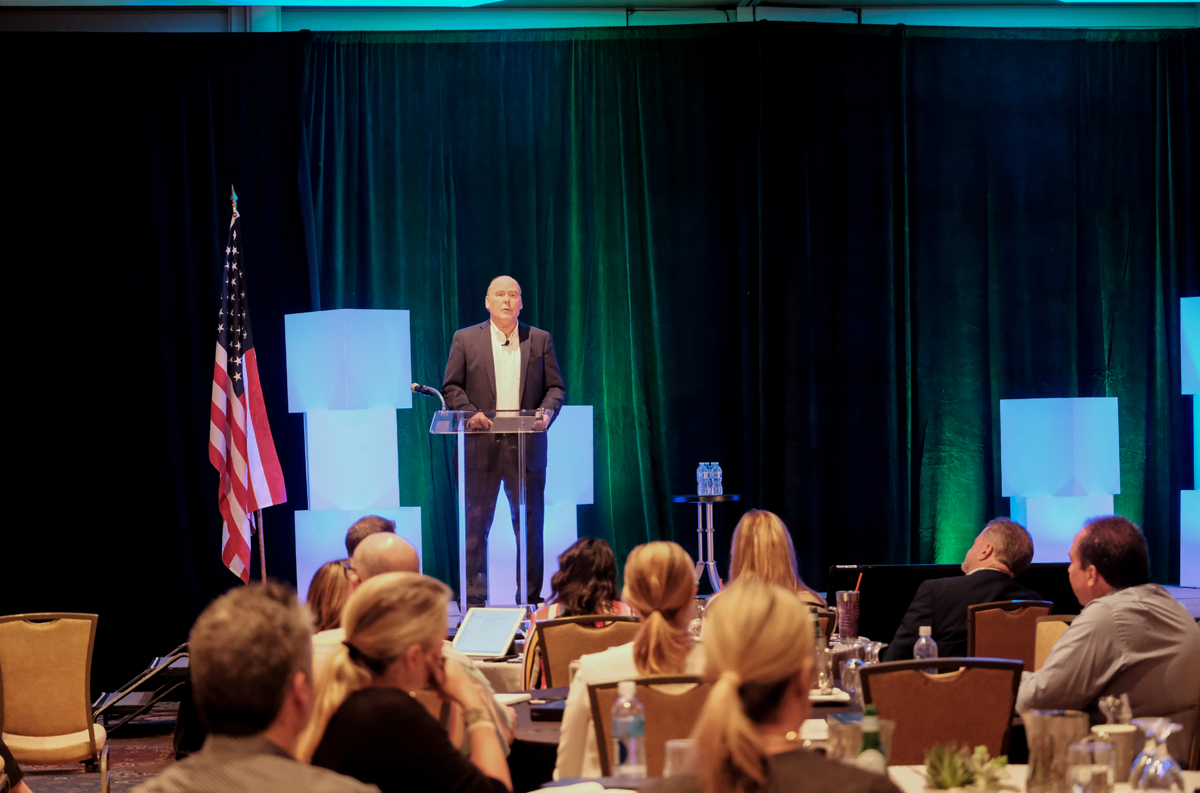Don Rheem Speaks At NALC On Crucial Role Of Employee Engagement
Don Rheem, CEO of E3 solutions, led a particularly thought-provoking speaker session, Maintaining a High Performance Culture: Thrive by Design, on Tuesday, the final day of PPAI’s North American Leadership Conference. Rheem’s company, based in Arlington, Virginia, is a science-based management consulting firm that helps companies increase employee engagement, and Rheem—who has led a number of TEDx Talks, is a former science advisor to Congress and a White House correspondent, and has authored, Thrive by Design: The Neuroscience That Drive High-Performance Cultures—discussed the gravity of engaging employees in a progressively competitive workforce, and how workplace satisfaction affects the human brain.
“What drives human behavior at its most fundamental level is identical for every human being on the planet,” said Rheem. He explained that regardless of perceived barriers associated with gender, education, culture, demographic or age, people look to develop human connections and a sense of comradery at work. “When we’re awake, we spend most of our time with other adults at work,” he said. “We should be happy and engaged when we come together, when we come to work, but that’s not actually what happens.” Rheem explained that nearly 70 percent of employees in the United States arrive to work “feeling disengaged,” and in some countries, like Japan, approximately 94 percent share this feeling.
How did this low level of engagement come to be? During his talk, Rheem touched on three key areas: labor, the new generation of workers and neuroscience. During the Industrial Revolution, he says, economists referred to people as “human capital.” At this time, the focus was on keeping a job, because there was a plethora of available workers and it often took months or years to find another position. Due to “paycheck leverage”—complying with companies in order to receive a paycheck—workers accepted unfair conditions that were “physically abusive and toxic” and “dangerous,” simply because they needed a paycheck. Fast forward to August 2019, and the U.S. economy is in its 106th month of continuous economic growth, said Rheem, and in its 105th month of continuous job growth. Far different from the Industrial Revolution, the U.S. is now experiencing a shortage of skilled workers—there are 7.5 million unfilled jobs and not enough people to fill them. The new norm has shifted monumentally from paycheck leverage to difficulty finding and retaining quality talent. “Your employees, they don’t need your paycheck. They need one, but they don’t need yours,” said Rheem. “This means that we now have to have a reason for people to come to work for us.”
Rheem then touched on how the new generation of workers, Millennials and Gen Z, have transformed the workforce. This generation no longer looks to their jobs to solely provide a paycheck, but also to give meaning and purpose to their life because, unlike their predecessors, Millennials and Gen Z don’t typically live in a state of survival. Rheem asks the audience to consider their parents and grandparents, who lived through extended years of deprivation. For them, work was survival. “If someone had a job during a world war or the Great Depression, it meant access to food and shelter. Millennials haven’t experienced any long-term deprivation in their lives,” he said. “They do not frame work as a survival issue. They want something else from work other than a paycheck.”
Because of the need for purpose, Millennials and Gen Z also look for validation in the workplace, more so than earlier generations. “Every human being on the planet wakes up looking for validation, but Millennials are pushing us to the point of doing it to the extent that it needs to be done,” he said. Relating back to the neurological component, which he referred to throughout his talk, Rheem explained that when people are noticed, the brain releases small amounts of oxytocin. Millennials, who have an average tenure of 2.5 years in a job, anticipate ongoing validation, and if they don’t receive it, companies are at risk of losing their younger employees. “If you don’t send a clear, unambiguous signal to Millennials every six to nine months, they’re probably looking,” he said.
In the modern day, employees also look to the workforce as a place to socialize and form friendships. “Over the past 25 years, we have developed the technology to reach out and contact virtually anyone in the world at any time of day for virtually no cost,” said Rheem. But, he added, at the same time, about 40 percent of Americans feel “pervasively alone and isolated,” which he described as “one of the most severe public health problems we face today.” Again, connecting to the neurological component, Rheem explained, “We are, at our core, herd animals,” and that human connection is not only hardwired into the brain for survival, but it contributes to one’s happiness and sense of belonging. The workplace today must address the loneliness phenomenon and provide employees with the atmosphere of teamwork and collaboration.
So, what exactly is employee engagement? Rheem explained that in order to improve employee engagement, companies must measure it. Disengagement looks like “negativity,” “apathy,” “gossip” and “complaining,” and employees who are disengaged may be “confused” exert “minimal effort,” be “disruptive” and “toxic.” The financial cost of disengaged employees, he said, is 10-15 percent of annual revenue. Not only must engagement be identified, but feedback should be provided, in addition to validation. “Recognition is conditional, but it needs to be more positive, and we need to start recognizing things.” He encouraged managers to learn how to look for smaller efforts and comment on them. He also encouraged the eradication of the annual review in exchange for a review that happens on a more ongoing basis. Finally, reinforcement, he said, is key. “As every day passes, you’ll forget more and more what you heard.” He also advised that managers, employees and other staff should receive ongoing training and education opportunities to provide them with the tools and tool refreshers they need to excel and meet the growing and changing demands of their workplace.





